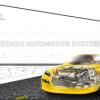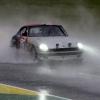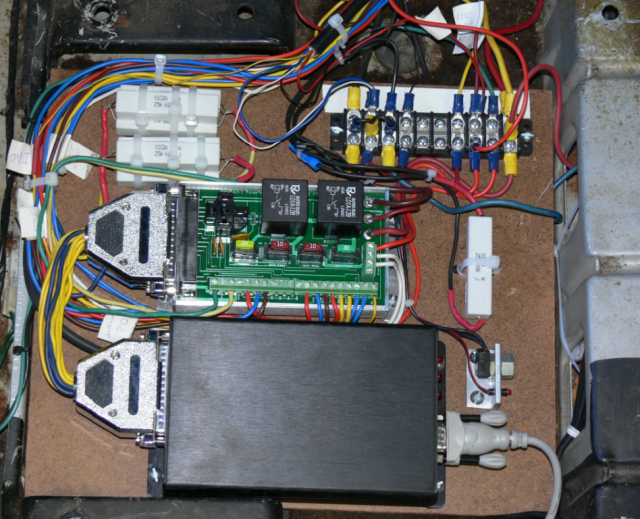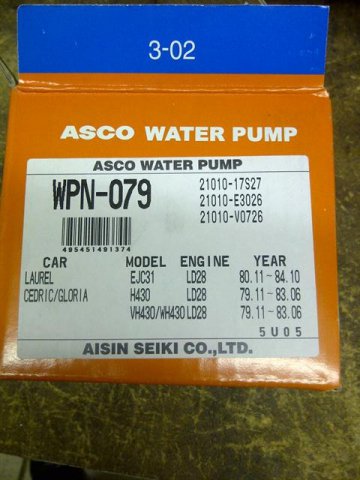-
Posts
1568 -
Joined
-
Last visited
-
Days Won
1
Zmanco last won the day on March 1 2010
Zmanco had the most liked content!
About Zmanco
- Birthday June 26
Profile Information
-
Gender
Male
-
Location
Castle Rock, Colorado
Contact Methods
-
Skype
daniel.bailin
Recent Profile Visitors
10363 profile views
Zmanco's Achievements
Newbie (1/14)
13
Reputation
-
I'll agree for a street driven car. However, using PWM on the track did not work for me. I was at a very warm track day and the car would intermittently lose power for a few seconds towards the end of the session in the afternoon. The logs showed going full lean. After eliminating spark as a possible culprit, I hypothesized that the injector drivers were overheating. Of course, there was no practical or safe way to recreate this away from the track, so I added the resistors and have never had the issue happen again. It may just be a combination of issues unique to my car and injectors, but using the resistors is simple, cheap and reliable. And given the cost of a track day, I didn't want to spoil any more sessions.
-
This is how I did it. 3 x 10W 6 ohm resistors in parallel for each bank. I forget which online electronics parts store I bought them from, but they're cheap. The conductors are solid so not forgiving of flexing over time. So mount them solidly and tie the wires down and you'll be fine. These have been in for 8 years now.
-
1990 Maxima. Autolite #14661. I initially purchased a rebuilt from my local parts store and it failed within 2 years. The warranty replacement is now making noise with higher electrical loads, so I wouldn't recommend Autolight...
-

Chassis Setup (corner weights)
Zmanco replied to 74_5.0L_Z's topic in Brakes, Wheels, Suspension and Chassis
What have we learned in the last 10 years that caused the thinking to switch to stiffer springs in front, even when there's still a rearward weight bias? And is the "new thinking" only for track cars with stiffer springs and smaller bars as opposed to the more traditional street setup with relatively softer springs and stiffer bars? -
Tony, I was using Corky Bell's definition from his book, "Maximum Boost". From the glossary on page 235: Boost Threshold or Boost Point: This is the lowest engine rpm at which boost from the turbocharger will increase power over the engine's atmospheric equivalent. More simply, the lowest rpm at which noticeable boost (usually 1-2 psi) can be achieved.
-
You probably don't want to hear this, but you could switch to crank trigger pretty easily
-
How did you wire it? Did you use shielded wire? At which end is it grounded? FYI, I know my setup is different than yours (using EDIS with trigger off of crank), but I used shielded wire grounded at MS and have no issues with tach sync. Try to avoid routing it near the injector wires too - but you probably already knew that.
-
I ran the same setup as you with a 4.11 and turned 3100 rpm at 75 mph. There is so much other noise in my 73 that the extra revs don't make a big difference. I recently swapped to a T5 with 3.54 that keeps the same ratio in 1 and 2, but lowers in 3-5 and now turn 2800 rpm at 75 mph. There's no doubt that the car is a little more "relaxed" cruising, but the difference is small. I think the bigger issue is going to be running out of revs and having to shift more with a 4.36. On the road course I frequent, I was constantly bumping up against the rev limit in third before, but the extra 10 mph in that gear now let me focus more on driving and less on shifting.
-
I wouldn't be too concerned yet about the low compression readings as you could probably increase them by doing the test warm, holding the throttle open, adding a little oil to the cylinders, etc. What's the MAP reading at idle? Mine is typically between 45 and 48 at 750 rpm at 6200 ft elevation. As for hesitating and misfires, your new best friend is datalogging. Look at the misfire events to see what's going on. One simple cause could be not enough Accel Enrichment. There's really no good way to tune this except trial and error, although I think I saw an article on the DIY Autotune site that was the best approach I've seen yet. Most people use too much AE initially as it's an easy way to solve hesitation issues due to improperly tuned VE tables. I have learned that as I improve the VE table, I find I can use less and less AE. So either use it sparingly to start, or don't forget to come back and reduce it later.
-
Is that on the street or the track? I don't mean to argue with you, it's just hard to imagine an S30 with its poor aerodynamics making 400+ whp and not exceeding 195 on a road course. What else have you done to improve cooling?
-
I'm running the aluminum AFCO from MSA with my turbo L28 ~300 whp and see 235F water temps (and 250F oil with 25 row Earl's cooler) within 15 minutes on 85F days at the track (at which point I usually back off). This is at ~5k feet elevation which doesn't help either. I don't think this a radiator issue as much as it's an airflow to the radiator issue. See Proxlamus' thread about blocking off the inlet to the radiator to see how managing flow into the rad will affect cooling. I have not gone that route as I don't want to change the look of the car, so have accepted that I just have to live with it.
-
The shaft hole measures 11.9 mm across.
-
-
Rockauto lists a separate part number for the Maxima diesel AISIN Part #WPN079 and I've ordered one. Should be in by the time I'm back home on the weekend. We'll see if it really is the diesel one...
-

L28ET - Suddenly 0 oil pressure (Not a faulty gauge!) *SOLVED*
Zmanco replied to tyson's topic in Nissan L6 Forum
What you say is true, but the problem with the air in a tire analogy is that you are using a compressible fluid (air in this case) and oil is essentially uncompressable. So the amount of oil in a given volume at 0 psi is essentially the same as at 35 psi. So my question remains: all else being equal, in our L engines, does using a lower viscosity oil result in more or less VOLUME of oil being delivered to the lubricating surfaces?





